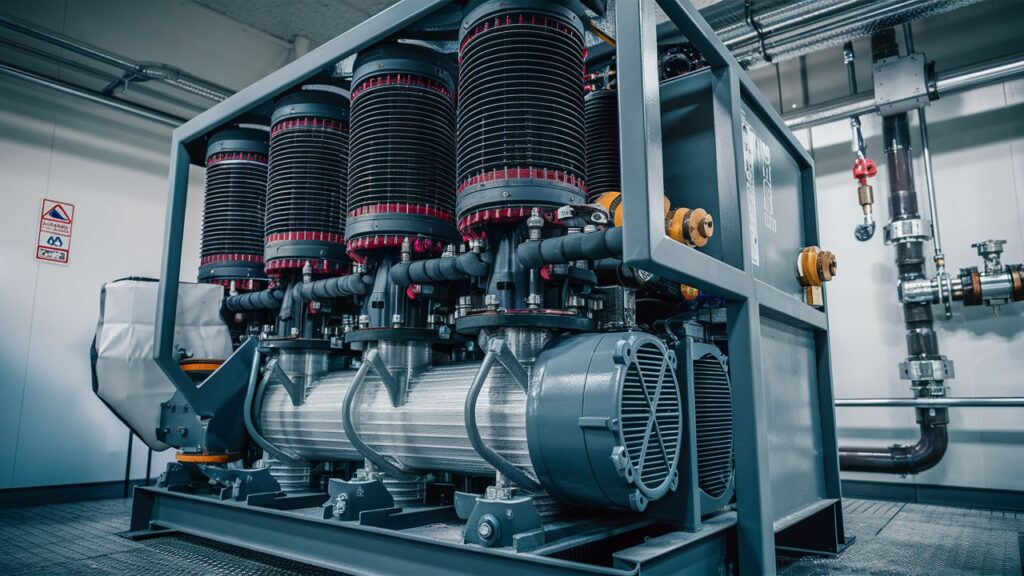In the world of industrial equipment, the role of compressed air systems is fundamental to a wide variety of applications. Among the different types of compressors, rotary screw compressor packages stand out for their efficiency and reliability. These systems are designed to provide a consistent supply of compressed air, which is essential for numerous industrial processes. Understanding how these machines work and their benefits is crucial for businesses looking to invest in a compressed air system. Keep reading to delve into the intricacies of the rotary screw compressor.
Understanding the Rotary Screw Compressor and Its Function
A rotary screw compressor is a type of gas compressor that utilizes interlocking screws to compress air. As air enters the system, the rotation of these screws reduces its volume, thus increasing its pressure. This type of compressor is known for delivering a continuous and stable flow of compressed air, making it ideal for applications requiring sustained air output over extended periods.
These packages are self-contained systems that include all the necessary components, such as the compressor, motor, and filtration units, to function effectively. The compact design of an energy-efficient air compressor enables easy installation and operation within diverse industrial settings. The hallmark of the package is its ability to offer a turnkey solution for compressed air needs, streamlining the integration process for users.
Additionally, many rotary screw compressor packages are designed to be energy efficient, which can be a critical factor in reducing operational costs. A great example is the Vilter VSS-751 Rotary Screw Compressor Package (paquete de compresor de tornillo rotativo vilter vss-751, in Spanish). The integration of variable speed drives within the compressors allows them to adjust their output in response to the demand for air, thus conserving energy when full capacity is not required. This efficiency is not only beneficial for the environment but also provides substantial cost savings for businesses in the long term.
Key Components and Design Features of Rotary Screw Compressors
The primary components of a rotary screw compressor include the screw elements or rotors, the housing or stator, and the lubrication system. The screw elements are the heart of the machine, where the actual compression of air occurs. Precision engineering is required to craft these rotors, ensuring they fit closely together and effectively compress air as it passes through the chamber.
Moreover, the housing holds these screws in place and forms the compression chamber. It is typically made of robust materials capable of withstanding the high-pressure environment found within the compressor. The quality of the housing is paramount, as any leakage can lead to a loss of efficiency and potential damage to the system.
The lubrication system serves multiple functions, including sealing, cooling, and noise reduction. An oil film forms between the screws and the chamber, sealing the air during compression, dissipating heat generated by mechanical action, and dampening the operational noise. This system is critical to ensure the longevity and proper function of the compressor.
Applications and Industries Benefiting From Rotary Screw Compressor Packages
The versatility and reliability of rotary screw compressors make them suitable for a wide range of applications across multiple industries. Manufacturing plants utilize them to power pneumatic tools and machinery, which are integral to the production process. Their consistent air output ensures that there is no interruption or loss of efficiency in operations.
Additionally, the medical field relies on these compressors for various purposes, including hospital air supply systems where the quality and reliability of compressed air are critical for patient care. The oil-free designs of certain screw compressors meet the stringent standards required in healthcare environments.
The automotive industry benefits enormously from the application of rotary screw compressors. These systems are used in paint spraying, operating air-powered robots, and providing general factory air. The automotive sector’s demand for high-quality finishing and precision manufacturing underscores the importance of reliable compressed air systems.
Overall, the benefits of incorporating a rotary screw compressor into industrial applications are immense. From their efficiency and reliability to their adaptability across various sectors, these systems prove to be an indispensable component of modern industry. By understanding their operation, maintaining them correctly, and utilizing them in suitable applications, businesses can enjoy the full advantages of these powerful machines.


